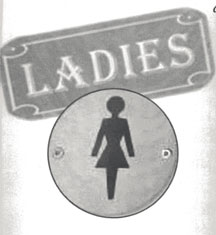
This isn’t the list I started with.
On my first list I reached #9 and realized that every single thing was about doing “more.” Well, there’s just no more time or space for more, without moving something out, mentally and physically.
So here’s my revised list. For every “more” I have included I had to decide what I would do less of. It’s time to create some space!
MORE
1) Thinking bigger. I think I created neuropathways in my brain that cause me to travel down the same rutted roads. Time to get off road altogether and explore completely new territory. Breathe in fresh air and explore big possibilities.
2) Expected more. Related to #1. Expect more of myself and expect more from others. Not in a grueling way; maybe it’s more accurate to say expect different. Expect big things.
3) Asked more questions. Related to #1 and #2. I’m a big-picture thinker and I get slightly impatient when people ask me for details. The webs of connections in my brain are about concepts, not specifics. Consequently, I don’t ask others for specifics either. Not good. For example, my car has been in the body shop for three days. Did I ask, when I dropped it off, what day it would be ready? No. Minor detail overlooked. I was busy conceptualizing (probably about how I would come up with the deductible on the insurance claim!).
4) Listened to more music. Here’s a case of technology gone too far. My embarrassingly old CD player held only one CD. When you ask for a 10-disc CD play at an electronics store, they laugh at you. Music is digital now. So I put all my CD’s on iTunes. Now I have to go through seven steps just to play anything. I have to keep a sticky note inside my stereo cabinet to remember these steps. It’s just too much trouble. Hence, not enough music in my world. I’m going back. Once CD at a time is better than no music at all.
5) Planning. 2012 was definitely a year of action. While some planning took place, I like the idea of looking a year ahead and deciding what outcomes I want, then making a list each week of what will move me in that direction.
LESS
1) Perfectioneering. No, that’s not a typo. I just made up that new word. And seeing that red line under it — the clue that it won’t pass muster with my spelling and grammar checker andndash; will grate on me no end. I’m a perfectionist about trying to make things perfect. I’m sure it’s cost me laughter, gray hairs, wasted time and fewer blog posts (they weren’t perfect). Just the fact that I used that word is a step in the right direction.
2) Shopping. I confess, I have more shoes and purses than I’ll ever use! And I justified it all, saying I was doing my part to help the economy!
3) Eating. My excuse is the trip to Argentina, where half the country is Italian and the other half eats beef at every meal. The trend can’t continue into 2013. Enough said.
4) Worrying. I like to think I’m not a worrier. I like to think I’m looking at all the options, considering all the ramifications, all the possibilities. But there’s a tipping point where pondering turns into ruminating, which turns into worrying.
5) Rationalizing. Inventing excuses for all the things I didn’t do enough of (see above!) and inventing imaginary justifications for all the things I did too much of.
2012 has been a good year, one that brought many travels, a few long-anticipated accomplishments and new territory to explore. I wonder what my 2013 will look like when I put this list in motion. I’ll let you know next December!
In the meantime, what’s your reflection on 2012? What do you wish you’d done more of or less of?
 uchy subject, but sometimes women lose leadership credibility by criticizing other women.” I said. “I think we can address this, but it’s risky.”
uchy subject, but sometimes women lose leadership credibility by criticizing other women.” I said. “I think we can address this, but it’s risky.”

 Like most 17-year old girls growing up in southern California, I spent weekends at the beach. My girlfriends and I would pile into a car and head to 17th Street at Newport.
Like most 17-year old girls growing up in southern California, I spent weekends at the beach. My girlfriends and I would pile into a car and head to 17th Street at Newport.
